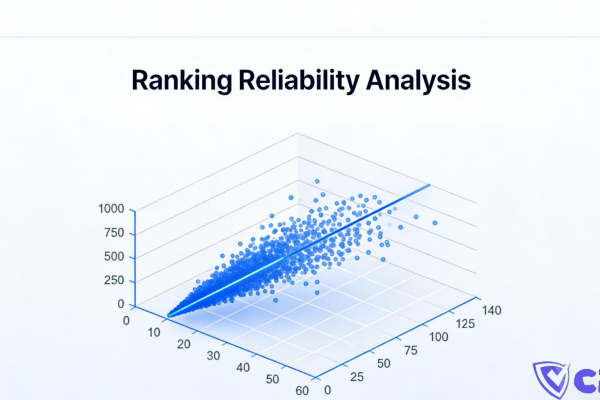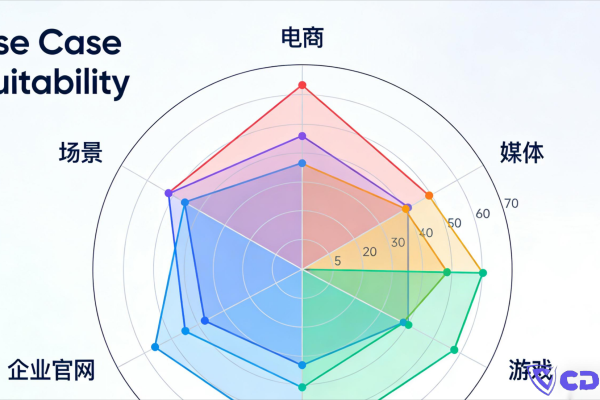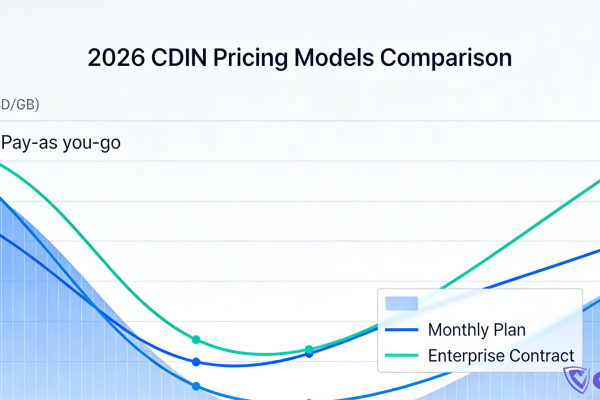A Smart Guide to Choosing Between High-Defense CDN Billed by Traffic or Bandwidth
Overseas Website Owners & Cross-Border E-Commerce: A Must-Read! This article thoroughly explains how to choose between traffic-based billing vs bandwidth-based billing, complete with money-saving hacks for hybrid billing + pitfall-avoidance tips based on business hours. It helps you reduce protection costs and avoid "heart attack-inducing bills" caused by hackers!

Last week, I helped a friend in China optimize his cross-border e-commerce platform. When we talked about CDN protection costs, he slammed his hand on the table: "Damn it! Last month, DDoS attacks spiked suddenly, and the traffic-billed CDN bill jumped around like an EKG—almost gave me a heart attack!" That sentence really hits the pain point for overseas website owners.
Finally, should you choose traffic-based billing or bandwidth-based billing? This question is like choosing a hot dog stand on a New York street—it seems simple, but you won’t know how spicy the yellow mustard is until you take a bite.
When I had coffee with a few seasoned infrastructure experts in Silicon Valley, they shared some straight talk: "Protection costs, at their core, are a probability bet." Traffic-based billing is like taking a taxi—you pay for what you use, and it’s pretty cost-effective for small-scale attacks on regular days. 
But once a large-scale attack hits, every second of junk data hackers flood into your pipeline gets charged, and the bill can end up more expensive than an emergency room visit in Manhattan. Last year, a Chinese company selling smart home devices fell victim to this—
They got hit with 300Gbps of junk traffic at 3 AM. When the boss woke up and saw the $15,000 bill, he smashed his mug into pieces right away, turning it into a "modern art piece."
Bandwidth-based billing is more like a monthly gym membership. You pay a fixed amount each month to buy a "protection pipeline"—10Gbps, 100Gbps, whatever you need.
When an attack comes, as long as it doesn’t exceed the pipeline’s capacity, you’ll stay secure no matter how fierce the "flood" gets. A local Chinese forum used this trick to fend off constant attacks from Taiwan secessionists—with a fixed monthly cost of $500, the admins still sipped milk tea calmly.
The problem is, if you buy a 10G pipeline but only use an average of 1G, those 90% of your money are basically wasted—just as luxurious as an empty apartment with the heater on in a New York winter.
Now I’ll teach you a "hack"—treat traffic-based billing like the "deductible" in car insurance.
For example, sign up for a monthly 10Mbps bandwidth plan (cheap as cabbage), and at the same time enable traffic-based billing with a threshold for automatic switching. When attack traffic exceeds 80% of your bandwidth plan, it automatically switches to pay-as-you-go to handle the peak load.
Last year during the Double 11 sale, a cross-border qipao store did this. The attack peak reached 3 times the capacity of their bandwidth plan, but they managed to handle it with traffic-based billing—and the total cost was 40% lower than buying a 300Mbps bandwidth plan directly.
Before making the final decision, you need to figure out the "ins and outs" of your own business. 
For online education platforms, attacks always tend to strike during evening live class hours; for cryptocurrency companies, hackers target times when crypto prices fluctuate. A blockchain company in Seattle learned this the hard way—they bought a bandwidth plan based on China time, but hackers specifically launched major attacks during late nights in the US.
Later, they switched to flexible billing based on UTC+0 time zone, and saved enough money each month to buy three top-spec MacBook Pros.
Standing by the Hudson River, this becomes clear:
Small and medium-sized websites should choose monthly bandwidth plans for peace of mind—just like a Costco membership, the price is clear and straightforward;
Businesses with large traffic fluctuations should choose hybrid billing—like a Chinese restaurant preparing ingredients: having staple ingredients on hand plus last-minute purchases;
Standard
Great for large teams
800
/Monthly-

DDOS Protection Value: 200Gbps
-

CC Defense Value: 40000QPS
-

Number of Domains: 6
-

SSL Certificate: YES
-

Anti-blocking: YES
-

Websocket: YES
-

Network Acceleration: YES

Business
Advanced projects
2000
/Monthly-

DDOS Protection Value: 400Gbps
-

CC Defense Value: 50000QPS
-

Number of Domains: 50
-

SSL Certificate: YES
-

Anti-blocking: YES
-

Websocket: YES
-

Network Acceleration: YES
Enterprise
For big companies
5000
/Monthly-

DDOS Protection Value: 500Gbps
-

CC Defense Value: 200000QPS
-

Number of Domains: 100+
-

SSL Certificate: YES
-

Anti-blocking: YES
-

Websocket: YES
-

Network Acceleration: YES
As for financial and gaming companies that often get hit with hundreds of Gbps of traffic—just buy a bandwidth plan honestly. After all, every second under attack is burning real money.
Remember, there’s no such thing as an "unexpected bill" in hackers’ eyes. Their KPI is to make you have a "heart attack" over the bill.
Share this post:
Related Posts

Can You Trust Those "Top DDoS-Protected CDN" Lists? The Truth Revealed by a Veteran Webmaster
Are "Top DDoS-Protected CDN" lists actually reliable? Drawing from years of hands-on testing, this g...

Are Hong Kong CDN Nodes Really Faster? The Key Differences Between Hong Kong CDN and Mainland China CDN Explained
Are Hong Kong CDN nodes truly faster than mainland nodes? I compared Hong Kong CDN vs. Mainland Chin...

The 2026 CDN Pricing Guide: How to Choose the Right Plan for Your Business
CDN pricing varies wildly, from free plans to premium DDoS-protected lines. Based on the 2026 market...
